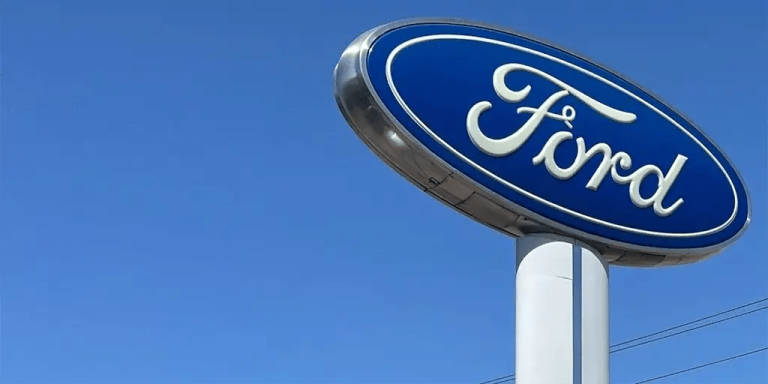From Robert Bryce Substack
Robert Bryce
FoMoCo loses $47,585 on every EV sold in Q2, GE Vernova calls offshore turbine blade failure 'manufacturing deviation'

Losses keep happening. As I reported in February, Ford Motor Co. lost $4.7 billion on its electric vehicle business in 2023, or about $64,731 per electric vehicle sold. Today, the company reported that its Model e segment lost nearly $2.5 billion in the first two quarters, meaning Ford's total electric vehicle losses are expected to reach $5 billion in 2024. Losses fell by a quarter in the second quarter, and they're still stunning. Let's take a quick look at the results.
On July 3, the company announced its second-quarter sales data. Its electric vehicle sales totaled 23,957 units, an increase of 61% compared with the same period in 2023.
But the funding figures released today are sobering. Yes, the company sold 23,957 electric vehicles during the quarter, but lost $1.14 billion in the process. As a result, Ford loses $47,585 on every electric vehicle sold. The company suffered losses “due to continued industry-wide pricing pressure on first-generation electric vehicles and declining wholesale volumes,” the company said in a news release. These factors more than offset approximately $400 million in year-over-year cost reductions in this area.
In short, the company said its cost-cutting efforts weren't enough to make up for the price cuts it was forced to make to attract buyers. From a loss of $47,585 per electric vehicle, a Ford dealer in Austin currently has more than 20 Mustang Mach-E vehicles in stock, selling for less than $47,000.

Knowing more about the context of the company's sales helps illustrate the scale of Ford's faltering electric vehicle business. In the second quarter, Ford sold 199,463 F-Series trucks. In addition, it sold more than 500,000 internal combustion engine vehicles (ICEV). So, as shown above, the Dearborn-based auto giant sells 21 times more ICEVs than EVs.
The ongoing disaster in electric vehicles has (finally) awakened Ford's leaders from their loss-making stupor. On Thursday, the company announced it would spend $3 billion to expand production capacity of its lucrative F-Series product line. In a July 18 press release, the company said that to meet “customer demand for one of its most popular and profitable vehicles,” it will add “100,000 F-Series Super Trucks” to its Oakville Assembly Plant of initial production capacity, including future multi-energy technologies” complex located in Ontario, Canada. ” The press release also included some telling words from the company’s chief operating officer, Kumar Galhotra:
This investment will benefit Ford, our employees in Canada and the U.S., and especially our customers who want and need Super Duty for their lives and livelihoods… It’s totally Consistent with our Ford+ profitable growth plan as we take steps to maximize our global manufacturing footprint and achieve a rapid return on our investments. (Emphasis added.)
In other words, Ford has decided on profitability. Instead of continuing to pour money into its cash-burning electric vehicle business, it's expanding production of vehicles that keep the lights on, which means producing more F-150s and other dinosaur-juice-burning vehicles.
That last point is further proof that the EV craze is losing steam: On Tuesday, General Motors Chief Executive Mary Barra told Wall Street analysts that her company was delaying investments in electric vehicles to ensure wall street journal What it says is, “The company didn’t exceed demand.”

GE Vernova wind turbine orders drop sharply, CEO calls blade failure a 'manufacturing deviation'
In the annals of the corporate world, GE Vernova (GEV) CEO Scott Strazik certainly deserves an award for his use of the term “manufacturing deviation” to explain the July 13 incident of a turbine blade disintegrating at a Vineyard wind project offshore Massachusetts. Nantucket.
Yesterday, during a conference call with investors to discuss the company's second-quarter financials, Straczyk addressed the issue of turbine blade disintegration. You may recall that blade failure sent large amounts of debris into the ocean, forcing Nantucket's beaches to temporarily close during the summer tourist season. The turbine blade disaster has also halted construction on the 800-megawatt offshore project owned by two foreign companies, Avangrid and Copenhagen Infrastructure Partners, while investigators try to figure out what happened.
During the call, Straczyk explained that the blade was manufactured at a factory in Canada and “our investigation to date indicates a manufacturing deviation occurred in the affected blades.”
What does this mean? this MV era “GE Vernova later issued an emailed statement saying the manufacturing issues were due to 'insufficient bonding,' but they did not provide further explanation,” the report said. Vernova's office in Cambridge has not returned multiple calls seeking explanation. .
GE Vernova's second-quarter results shed light on the slow-moving train wreck currently underway in the wind industry. Although the company announced higher revenue and profits, it also revealed that its wind-related orders fell “primarily due to the large number of offshore wind equipment orders in the second quarter of last year that were canceled in the fourth quarter”.
The press release went on to note that orders for new wind turbines plummeted 44% this quarter and wind power revenue fell 21%. The company's wind power business was its only loss-making segment during the quarter. The power division's EBITDA was $613 million, the electrification division's $129 million, and the wind power division's loss of $117 million.
As I noted in Breaking the Wind earlier this week, the wind energy industry faces a lot of pain. This was further evidenced on Friday when Level Ten Energy reported a 13.5% annual increase in PPA prices for new wind projects. Solar energy prices rose about 3%. As a result, Gale not only caused numerous turbine failures on land and offshore, but also sparked a growing backlash across the U.S. as local governments and landowners refused to accept its horrific landscape destruction, wildlife killings, and more. , endangered whales and property violations.
related
